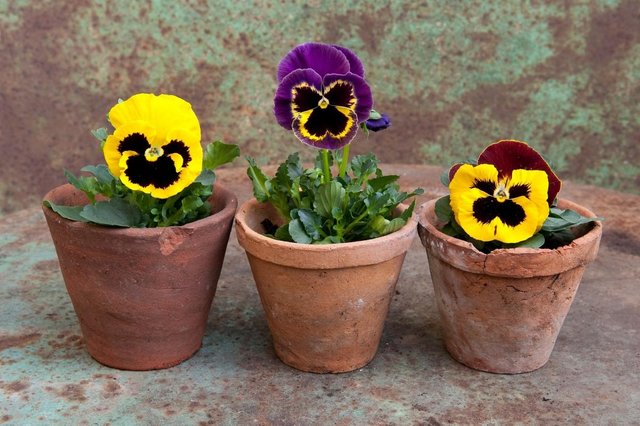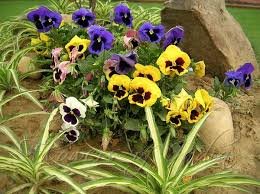1565773816218.jpg)
Pansy is available throughout the year in India but usually planted in winter or fall. They are colorful and vibrant, a great addition to one’s garden. They are also known to be the valley flowers

Etymology
The name "pansy" is derived from the French word pensée, "thought", and was imported into Late Middle English as a name of Viola in the mid-15th century, as the flower was regarded as a symbol of remembrance. The name "love in idleness" was meant to imply the image of a lover who has little or no other employment than to think of his beloved.
The name "heart's-ease" came from St. Euphrasia, whose name in Greek signifies cheerfulness of mind. The woman, who refused marriage and took the veil, was considered a pattern of humility, hence the name "humble violet".
In Scandinavia, Scotland, and German-speaking countries, the pansy (or its wild parent Viola tricolor) is or was known as the "stepmother"; the name was accompanied by an aitiological tale about a selfish stepmother, told to children while the teller plucked off corresponding parts of the blossom to fit the plot.
In Italy the pansy is known as flammola (little flame).
Historical background
In the early years of the 19th century, Lady Mary Elizabeth Bennet (1785–1861), daughter of the Earl of Tankerville, collected and cultivated every sort of Viola tricolor (commonly, heartsease) she could procure in her father's garden at Walton-upon-Thames, Surrey. Under the supervision of her gardener, William Richardson, a large variety of plants was produced via cross-breeding. In 1812, she introduced her pansies to the horticultural world, and, in 1813, Mr. Lee, a well-known florist and nurseryman, further cultivated the flower. Other nurserymen followed Lee's example, and the pansy became a favorite among the public.
About the same time that Lady Bennett was busy cultivating heartsease, James, Lord Gambier was doing the same in his garden at Iver under the advice and guidance of his gardener William Thompson. A yellow viola, Viola lutea, and a wide-petalled pale yellow species of Russian origin, Viola altaica were among the crosses that laid the foundation for the new hybrids classed as Viola × wittrockiana, named for the Swedish botanist Veit Brecher Wittrock (1839–1914). A round flower of overlapping petals was the aim of some early experimenters; in the late 1830s a chance sport that no longer had narrow nectar guides of dark color on the petals but a broad dark blotch on the petals (which came to be called the "face"), was found. It was developed in Gambier's garden and released to the public in 1839 with the name "Medora".
By 1833, there were 400 named pansies available to gardeners who once considered its progenitor, heartsease, a weed. Specific guidelines were formulated for show pansies but amateur gardeners preferred the less demanding fancy pansies. About this time, James Grieve developed the viola and Dr. Charles Stuart developed the violetta, both smaller, more compact plants than the pansy.

You got a 12.24% upvote from @bidvote courtesy of @kuldeepsinghpain!
Downvoting a post can decrease pending rewards and make it less visible. Common reasons:
Submit